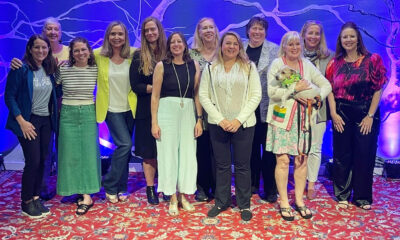Create
Author David C. Edmonds explores flamenco, bootleg whiskey … and time-travel

David C. Edmonds, Ph.D. holds an impressive array of titles: Former U.S. Marine, Senior Fulbright Professor of Economics, academic dean, Peace Corps volunteer, government official in a dozen Latin American countries.
His movements in the latter category – some of them in war zones and some of them clandestine – make David C. Edmonds an erstwhile International Man of Mystery.
The Louisiana native has worked elements of everything into his latest career, as a novelist. Scenes, moments, locations, characters and even stretches of dialogue are drawn from his real-life adventures.
“What I like about fiction: The boy can get the girl, even though he didn’t in real life,” Edmonds says. “You can kill all the people you don’t like.”
 St. Petersburg Press has just published Edmonds’ fourth novel, Flamenco in the Time of Moonshine and Mobsters.
St. Petersburg Press has just published Edmonds’ fourth novel, Flamenco in the Time of Moonshine and Mobsters.
Set in the Tampa Bay area, it’s the story of part-time flamenco dancer Amy Romano, who finds herself transported, via a sort of Wizard of Oz meets Quantum Leap black hole, into a different era.
In Edmonds’ story, it’s a sinkhole, not a black hole. Might as well be the same thing.
Writers call it magical realism.
“I was thinking about that guy who got swallowed up by a sinkhole,” the author muses. “I thought ‘What happened to that guy?’”
His fertile imagination took it from there.
“I spent a lot of time in Spain,” Edmonds explains. “My wife’s family was from Spain. And we always went to flamenco shows when we were there. I’ve gone to flamenco shows in Mexico, and Peru, and Portugal.”
Next, Edmonds thought back to stories his mother had told him after his father died, about how the old man had operated moonshine stills in the Mississippi swamps during prohibition (Dad himself had never shared the information with young David).
“All his buddies got caught, because they ran their moonshine in trucks,” he says. “My father used a small airplane. So the G-Men never found him.”
A story was forming in his mind. “So I just put all of these things together – sinkholes, flamenco, moonshine,” Edmonds says.
He worked on Flamenco for two years – rising at 4 a.m. each day to point his characters in new directions. “They are very real to me. When you get into fiction, you fall in love with a woman, and you begin to really dislike the bad guys.”
He’d often lie awake at night, thinking about potential plot twists. “I get totally obsessed with this once I get into it.”
Edmonds’ first book was published in 1987: Yankee Autumn in Acadiana: a Narrative of the great Texas Overland Expedition Through Southwestern Louisiana October – December 1863.
A lengthy, non-fiction narrative about a costly Civil War campaign, it was well-received and produced four additional volumes on the same subject.
“I was a professor of economics at LSU at the time,” Edmonds says. “And I thought ‘I enjoy writing a lot more than I enjoy being a professor.’”
Hollywood adapted his next second book into the film Belizaire the Cajun, starring Armand Assante.
In 1994, during a brief visit to Florida, Edmonds met Maria Nieves, St. Petersburg College’s provost for international students, and one of the bay area’s top Hispanic advocacy leaders. They married following a two-year courtship.
He had retired from teaching, and the couple often indulged their love of travel – but writing, Edmonds says, remained the second great love of his life.
His first novel, Lily of Peru, was about a professor looking for his long-lost girlfriend at the same time the country’s Communist Party (known as The Shining Path) was engaged in a brutal insurgency.
“I had the experiences,” Edmonds explains, “and I often thought about doing a memoir – and nobody wants to read a memoir, at least about something I did!
“So I thought I could take my experiences over three decades and put them together as if they’d all happened in a two-month period during this turbulent period in Peru, when Shining Path was on the verge of taking over the country. I superimposed a plot over that.
“So a lot of the things that I wrote about in the book actually happened, except much embellished and changed to fit the plot.”
Lily of Peru won an International Latino Book Award for fiction, the Florida Writers’ Association’s coveted Royal Palm Literary Award, and the Silver Award of Readers Favorites. Latino Literacy Now honored the book with a Latino-Books-Into-Movies Award. A Spanish-language edition was published.
Next came The Girl in the Glyphs, set in Nicaragua, yet another bloody Latin American country in which he’d spent an inordinate amount of time.
He based it on a story his Nicaraguan driver had told him, about a cave deep in the mountains, where Sandinista soldiers would hide when American planes began dropping napalm to flush them out of the forests.
With the help of a friendly comandante, Edmonds was able to locate the cave, part of an ancient Mayan jade mine.
“Together, my wife and I concocted a plot, and made it a female looking for a cave. And there happened to be pirate gold in the cave. I set the book on an island in Lake Nicaragua, instead of in the jungle.”
The Girl in the Glyphs was also an award-winner.
Maria Nieves Edmonds succumbed to cancer in 2017. Her influence, however, is on every page of Flamenco in the Time of Moonshine and Mobsters.
In the book’s early stages, Edmonds says, he was unsure about its setting. “I’d always wanted to write something set in the French Quarter of New Orleans. But my wife said ‘No no no – it has to be Ybor City!’ There were mobsters there, trafficantes.
“So I thought yeah, that’d be a good place to set a book.”
Details and purchase info here.







